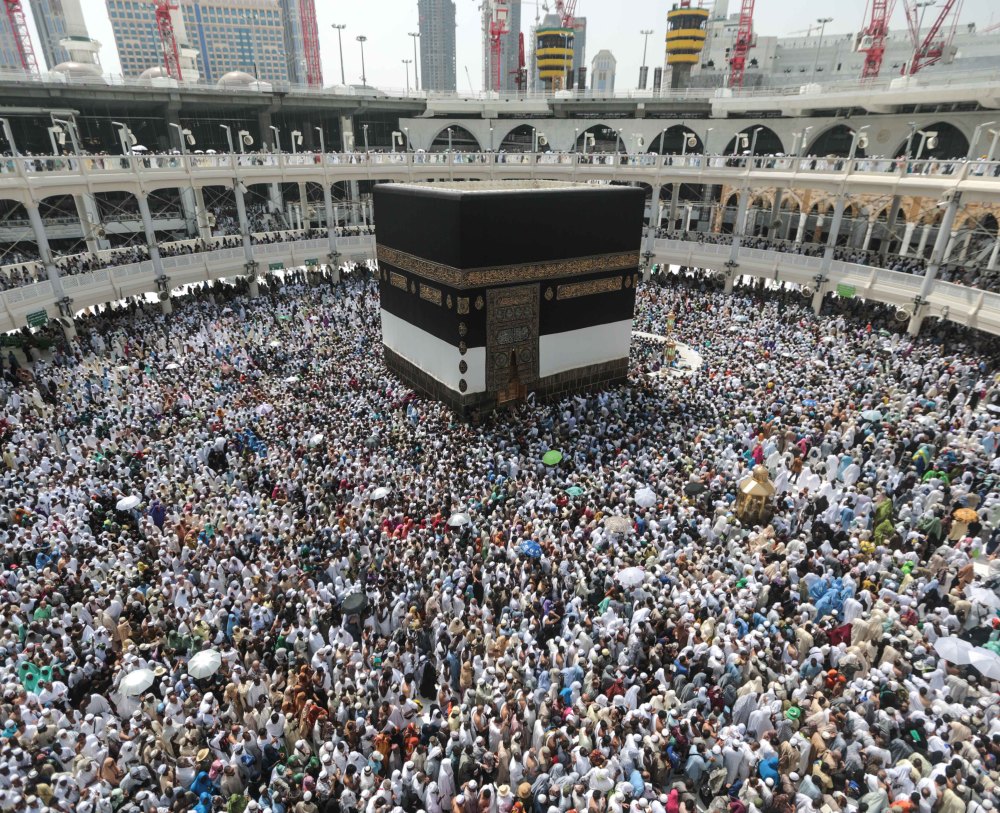BAGHDAD — Pressure mounted on Saudi Arabia on Friday after a stampede killed more than 700 people near the holy city of Mecca, a disaster that raised questions about the country’s ability to manage the safety of the millions of pilgrims who travel to its holy sites each year.
The death toll of 719 – which Saudi officials said could rise – made it the deadliest incident during the annual hajj pilgrimage in a quarter of a century. One survivor said people toppled “like dominoes” before being trampled or suffocated.
A video posted online appeared to show a scene from the tragedy. Shot from an overlooking bridge, it showed a sea of pilgrims crammed into a fenced-in pathway. Stewards then appear to open a side gate allowing for an exit from the crush, leading people to surge from both directions to escape.
Saudi officials said most victims had ignored the allocated time slot for their groups, but criticism is mounting of their handling of security.
Iranian officials accused Saudi security forces of blocking two pathways along the hajj route, causing congestion and killing at least 131 of its nationals. Iran’s Supreme Leader Ayatollah Ali Khamenei said Saudi authorities should shoulder responsibility, blaming their “mismanagement” for the catastrophe.
“It is not God’s will. It is man’s incompetence,” said Mohammad Jafari, an adviser to a British tour operator that organizes hajj trips, the BBC reported.
Saudi Arabia has struggled to deal with a growing numbers of visitors for the hajj as Mecca has become more accessible and air travel more affordable for a burgeoning global middle class. The mingling of about 2 million people from around the world has also raised concerns that the pilgrimage could spark global epidemics.
Every Muslim is expected to perform the hajj at least once, as long as the person is physically and financially able to do so.
Stampedes have become less frequent in recent years as Saudi authorities have undertaken major construction work to ease the flow of pilgrims. But Thursday’s incident is likely to push authorities to implement further security and crowd-control measures and intensify calls for restrictions on the numbers allowed to visit.
Saudi Arabia has cut the number of pilgrims attending the hajj since 2012, when more than 3 million made the journey. Pilgrims from foreign countries are restricted by a quota system that varies from country to country.
Despite those efforts, countries that send large numbers of pilgrims have raised concerns about safety measures.
Saudi officials blamed the incident on a sudden surge of pilgrims along two pathways, saying most victims had ignored the allocated time slot for their groups.
The tragedy is the second to strike this year’s hajj. Two weeks ago, a crane collapsed at the main mosque in Mecca as preparations were being made for the pilgrimage, leaving more than 100 people dead.
Saudi authorities said they had launched an investigation into the cause of the stampede, which happened about 9 a.m. at Mina, a desert valley about four miles from central Mecca, on the first day Eid al-Adha, one of the holiest holidays on the Muslim calendar.
Crowds were making their way from a vast settlement of more than 160,000 tents to perform a hajj ritual to commemorate the stoning of the devil by the prophet Abraham, known in Arabic as Ibrahim.
During the ceremony, pilgrims fling pebbles at one of three pillars representing the devil. The rite is considered one of the most dangerous parts of the pilgrimage because of the large crowds it draws through the Mina area’s narrow roads.
“I thought I was going to die,” said Radhi Hassan, an Iraqi who was caught in the crush. “I pushed people and was able to drag myself out.”
Worshippers were rushing to finish the ritual before the heat of the day set in, he said, adding that “many” members of the group of 160 he was traveling with were still missing. Health authorities said the heat – which topped 110 degrees – contributed to the toll.
“Two elderly people fell to the ground, and then there was chaos,” Hassan said. “Thousands of people were trying to push through and stumbling and falling to the ground like dominoes. People were stepping on other people, and many people suffocated.”
But Maj. Gen. Mansour al-Turki, spokesman for Saudi Arabia’s Interior Ministry, said in a televised news conference that authorities should not be judged on “one accident.”
Send questions/comments to the editors.



Success. Please wait for the page to reload. If the page does not reload within 5 seconds, please refresh the page.
Enter your email and password to access comments.
Hi, to comment on stories you must . This profile is in addition to your subscription and website login.
Already have a commenting profile? .
Invalid username/password.
Please check your email to confirm and complete your registration.
Only subscribers are eligible to post comments. Please subscribe or login first for digital access. Here’s why.
Use the form below to reset your password. When you've submitted your account email, we will send an email with a reset code.